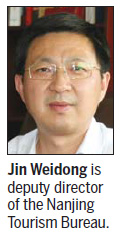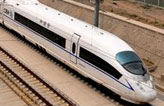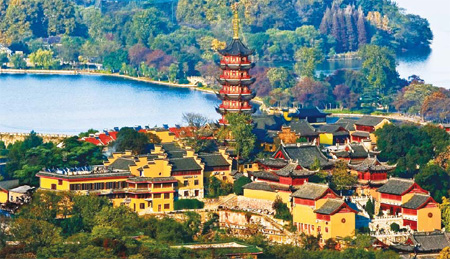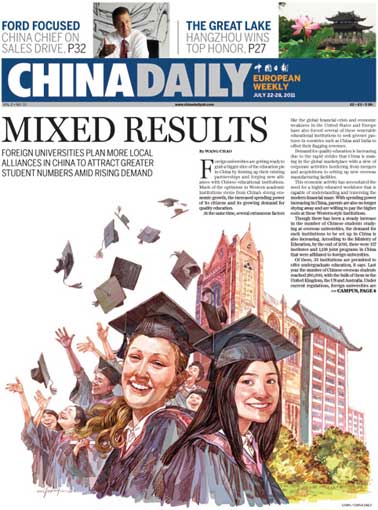When North meets South
Updated: 2011-07-22 12:49
By Wang Chao (China Daily European Weekly)
With its relaxed and tolerant nature, city retains most of old-World charm
Much like Beijing, Nanjing is also a melting pot of cultures. Though it has several other features in common with other Chinese cities, Nanjing's relaxed and tolerant nature sets it apart from the rest.
Beijing is like a son to Nanjing, says Jin Weidong, deputy director of the Nanjing Tourism Bureau in jest.
But that jest does make sense. Like Beijing, Nanjing was also the capital of China. The scale of the royal palace in Nanjing is much bigger than the Forbidden City in Beijing, while the city wall in Nanjing is better preserved than elsewhere. Even the street names in Nanjing have been adopted by Beijing, such as Xinjiekou and Gulou ("the drum tower").
|
 |
The city abounds with old architecture, nostalgia, and the legacies left by the late Kuomintang leader Chiang Kai-shek and his charming wife Soong Mei-ling.
Jin says unlike other cities, Nanjing has a hybrid culture, as it is the midpoint of northern and southern China.
"The hybrid culture is reflected in its food, architecture and even the disposition of Nanjing residents," Jin says.
Famous for its duck products, Nanjing also loves its sweet dim sum from South China's Guangdong province, spicy hotpots from Southwestern China's Sichuan province, and salty dishes from the north. Walking on along the snack street near the Confucius Temple, the rich aroma and fragrance of different types of food items permeate the air.
At teahouses in the nearby Qinhuai River, folk singers with an erhu (a traditional musical instrument) regale customers with ancient melodies.
"If Shanghai is the living room of China, magnificent and luxurious; Nanjing is its study room - full of the scent of books and the Chinese culture," Jin says, "You need to take time to savor it."
Xavier Leroux, director of Alliance Francaise de Nanjing, says Nanjing has preserved some of its royal dispositions.
"Every day during 4:30 pm to 6:30 pm the city becomes aggressive, when people are driving in the traffic; but during the rest of the day, time slows down and melts into the green shade of chinar trees," says Leroux who has lived and worked in Nanjing for nearly two years.
Ancient it may be, but Nanjing is also slowly turning commercial like most other cities. The once "Staff only" sign outside the city wall has been replaced by a brand new sign that welcomes visitors. A previously collapsed section of the wall has been repaired and bicycles are now available for rentals to check out the wall.
Nanjing is also home to many unique tourist destinations - the "presidential palace" once used by Chiang Kai-shek, Sun Yat-sen's mausoleum, and thousands of other buildings, which date back 100 years. Even the first asphalt street in China was built in Nanjing, to help the Chiang Kai-shek couple reach the hot spring water spas in the nearby mountains.
Many of the old houses in the city are now used for business purposes. The government is paying compensations for residents to move out of their old houses inherited from their grandparents, and converting them to non-residential spaces - bars, tea-houses and hotels, to better preserve them.
As the former capital of the Southern Dynasty (420-589 AD), when Buddhism was at its peak in China, Nanjing is also home to several Buddhist relics.
But the local government has found it hard to promote tourism in the city, as it has so many distinct attractions, and most of them are embedded with profound Chinese cultural belief that are hard for foreigners to comprehend.
Compared with Beijing and Shanghai, Nanjing's influence is still confined to Asia. Last year 1.3 million foreign tourists visited Nanjing, with 40 percent of them from Europe and the US.
Much of the problems lie in the absence of direct air routes from Nanjing to Europe and the US. Currently, the city has a direct flight to Frankfurt and plans are afoot to link Australia and the US this year.
"Because of its geographic and cultural proximity, tourists from Southeast Asia are better able to understand the nostalgic feeling in Nanjing," Jin says.
"We tried to promote Nanjing as a place with the best city wall in the world, but it was misunderstood by Western tourists as the Great Wall," Jin says.
Nanjing is now focusing on promoting itself with Yunjin, an exquisite silk product that is produced locally, and the Ming Tombs.
Since the Japanese and South Korean people love the history of the Three Kingdoms (220-280 AD), Nanjing emphasizes its status of being the capital of one of the three, the Wu Kingdom, when promoting the city to Japanese and South Korean tourists.
"It's all about reading the minds of the tourists; we need to work out different packages for different target customers," Jin says.
|
|
E-paper

The perfect cut
Companies need to revamp, standardize to stave off quality challenges
Going the distance
The great lake
Mixed Results
Specials

My China story
Foreign readers are invited to share your China stories.

90th anniversary of the CPC
The Party has been leading the country and people to prosperity.

Setting the pace in Turkey
China is building a 158-km high-speed railway in Turkey.

